#Hypertrichosis (Werewolf Syndrome)
Explore tagged Tumblr posts
Text

This is Lalit Patel. He has an extremely rare condition called Hypertrichosis, also known as werewolf syndrome. According to the media reports, the Indian teen said that people threw stones at him due to excessive hair growth and kids were scared that he would bite them. Unfortunately there is no cure for his condition.
Only 50 known people have had this condition.
10 notes
·
View notes
Photo

This is Lalit Patel. He has an extremely rare condition called Hypertrichosis, also known as werewolf syndrome. According to the media reports, the Indian teen said that people threw stones at him due to excessive hair growth and kids were scared that he would bite them. Unfortunately there is no cure for his condition.
Only 50 known people have had this condition.
12 notes
·
View notes
Text

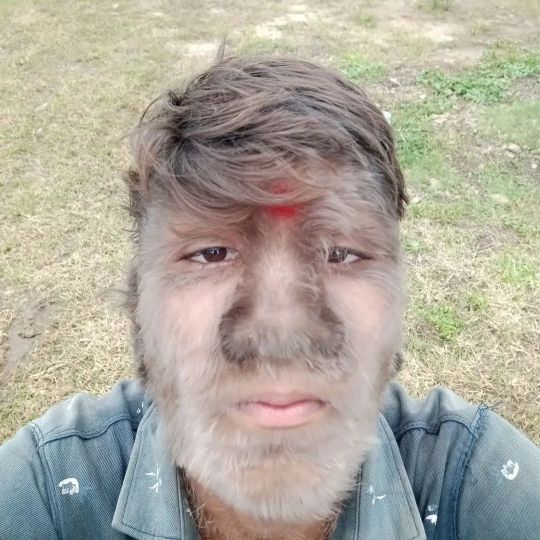
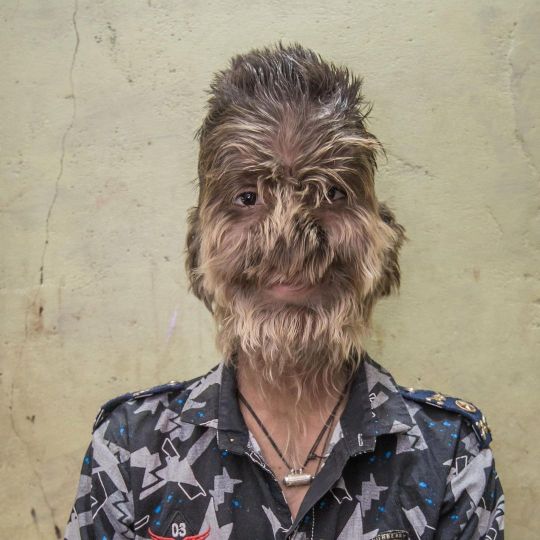
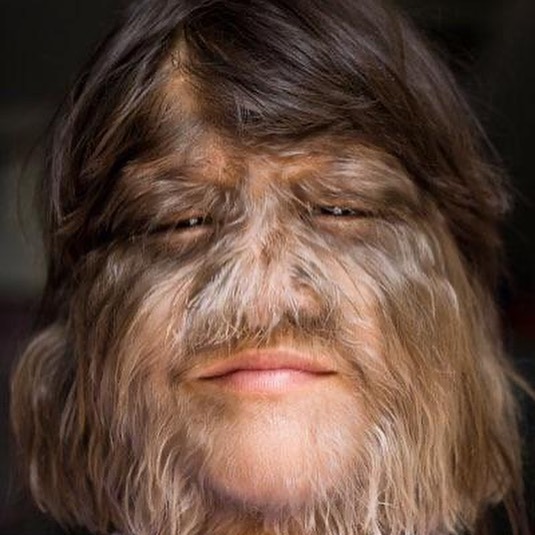

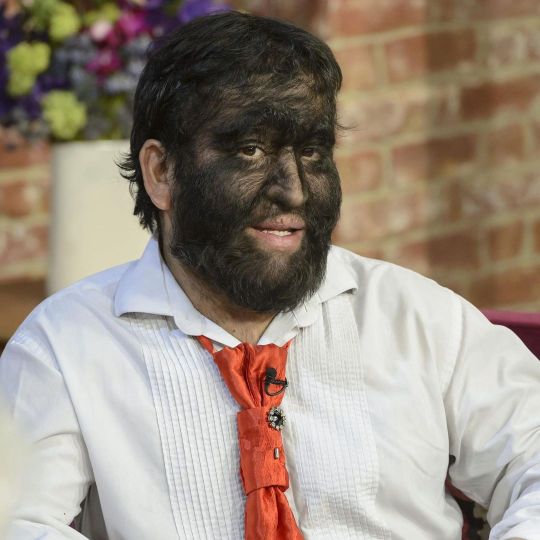
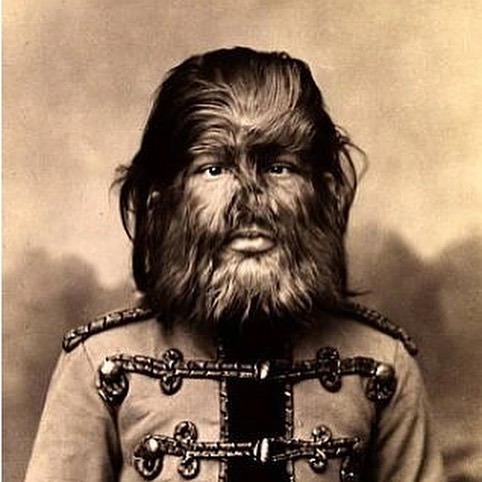

People With Hypertrichosis
Credit: MODERNNOTORIETY @modernnotoriety
#IG#Instagram#MODERNNOTORIETY @modernnotoriety#Hypertrichosis#People With Hypertrichosis#Hypertrichosis (Werewolf Syndrome)
6 notes
·
View notes
Text
WereKaiju
Here's the other idea that wouldn't leave my ass alone. Plus the spooky season is almost upon us so why not? Let's get started! Here's the next part.
A 23 year old Kafka Hibino was doing his best to get his life back together. Kaiju No. 6's monstrous rampage had utterly devastated a good chunk of Japan with his home being one such casualty. The nearest homeless shelter was obviously at max capacity and any housing is still under construction.
Kafka's day hasn't been any better either. He recently got beaten up pretty badly by a few thugs because he tried to stop them from mugging a poor old lady. (The man would still do it again despite his now broken nose, multiple bruises and probably cracked ribs.)
Overall, most of the year was awful as hell. Although his luck would only get worse when a buzzing sound awakens him from his sleep. The source being a very familiar small Kaiju we all know (with some finding it cute.)
I will say that Kafka does fight back against Tiny as he's been sleeping outside in the cold and thus wearing a scarf around his mouth to help keep warm. The small Kaiju tries to pry it off while the himbo defends himself. Now he managed to catch Tiny who yanked the scarf half way down.
Before Kafka could effectively trap the thing, the little Kaiju bites him hard. He lets go, screams, and Tiny takes that very moment to shove himself down our himbo's throat. Kafka ends up passing out as the pain of the transformation was too much for his damaged body.
When he wakes up the next day, everything is a blur. Kafka believes last night in general has been a hazy dream. The fight with the thugs and a kaiju going down his throat despite feeling strangely sore. (All his injuries obviously been healed by Tiny.)
Life goes on as the himbo is truly unaware of the monster slumbering inside. That's until the first full moon. Kafka is actually a dormant carrier of a unique condition called Hypertrichosis or Werewolf Syndrome to be precise.
It's basically when the body overproduces hair, often in localized or specific spots across the body. Why is this important? To put it simply, Tiny might have accidentally altered Kafka's dormant Hypertrichosis into something very different. A kaiju variant of lycanthropy.
Now Kafka's Kaiju operates differently than in canon. The condition of his transformation affects his overall appearance. Under sheer willpower, Kafka looks like his canon form but with a spine covered long tail. The full moon or rage results in a more monstrous version of Riot Mode.
Fur like quills growing between the armored plates, facial structure narrowing into a shape similar to a komodo dragon, fur sprouting from the back of his head/wrists/upper chest/, four dragonfly like wings, and his tail becoming similar to a pangolin but covered in spikes. Kafka acts like an oversized wolf during a Riot Mode shift. Those he considers part of his pact are met with 'giant puppy behavior'.
He scrutinizes every unfamiliar person as if waiting for them to make a move so he can act accordingly. Threats are immediately attacked with incredible ferocity so you better someone he cherishes is there to intervene. If you are guessing, Kafka's bite is infectious like any Werecreature.
Something he doesn't know until a fight makes him lose a tooth. The Defense Force analyzed and tested it on a rat to discover it's mutagenic properties. In short, a warning would be given about not getting bitten by Kaiju No. 8. Civilians are warned of deadly venom but the truth being restricted to official DF Members.
Reno tells Kafka about this ability once he officially joins. Our himbo obviously doesn't join the Defense Force. He's afraid of potentially infecting or killing someone thanks to his curse.
No.9 however is another case entirely. He WANTS No.8 for his infectious bite whether he's dead or alive. A kaiju capable of converting others is too important to ignore.
The Defense Force is more desperate to kill No.8. Such an ability could potentially end mankind itself if left unchecked. Kafka is gonna have a harder time avoiding the Defense Force.
Not just because of his scheduled shifts but also No.9 sending in kaiju to hunt him down. The Defense Force is slowly growing suspicious about these localized attacks as one Soshiro Hoshina notices a common denominator amongst each incident. A certain himbo Monster Sweeper at each scene.
He's going to be busted eventually. Although whether he turns inside an interrogation cell or in front of his childhood friend remains unknown. (Or lover if a pairing is involved like childhood sweethearts/married for a few years type. Kafka will get his needed hugs either way.)
For now, please enjoy another song that came to mind when writing these ideas: Monster By Skillet. Also if anyone wants to do their own take on the concept then go ahead! I don't mind plus there probably will be a more in-depth look sometime in the future.
youtube
@discoknack-old @renard-dartigue @drmarune @noodlesbf-blog @omniithe-deer @mechazushi @terra-sketches
#sonicasura#kaiju no. 8#kaiju no 8#kn8#kaijuno.8#kaijuno8#kaiju number 8#monster no 8#monster no. 8#kafka hibino#hibino kafka#werekaiju#werekaiju!kafka#werekaiju kafka#Youtube
18 notes
·
View notes
Text
Werewolf Fact #73 - Hypertrichosis, excessive hair growth ("werewolf syndrome"), Beauty and the Beast, and Bluebeard
Today I'll be covering something else clinical: hypertrichosis.

You may have heard of "werewolf syndrome," a condition of excessive hair growth. It isn't to be confused with clinical lycanthropy, which is something else entirely. "Werewolf syndrome" is also called hypertrichosis - and it's occasionally associated with and/or can even be derived from another condition, porphyria, that was also associated with "werewolves" throughout scholarship. Likewise, the most well-known kind of hypertrichosis that involves excessive hair growth all over the body is also often associated with gum and teeth problems; such issues could lead to unusual teeth and mouth shape.
Interestingly, however, despite a lot of modern scholars retroactively assuming that werewolf victims of the past could have suffered hypertrichosis, many of the werewolf legends in question specifically describe lycanthropy sufferers to look quite different. The legends in question are later era ones from the Early Modern period, during which time lycanthropy had become a madness and a disease under clinical and scientific supervision, very much unlike previous time periods, as I cover extensively in my book The Werewolf: Past and Future as well as other werewolf facts.
These legends describe sufferers of the werewolf curse variably to only be "hairy" when in their wolf form specifically (other than, occasionally, having long hair without mention of unusual body hair), highlighting how they were not unusually hairy in human form, or to "always [have] some hairs in the hollow of his hand" (as noted by Sabine Baring-Gould in The Book of Were-Wolves; taken from page 121 of my own edition of his work). Hypertrichosis often specifically does not have hair growth on the palms, conversely. Likewise, many legends of later time periods even specifically say that werewolves are not hairy "on the outside," but that their hair "grows inward" when they aren't in their inhuman form.
Still, scholars entertain the notion of connections that I still question to a healthy degree, so I have studied it as a result. I think it's best to simply summarize it as, the syndrome reminds people of what werewolves are meant to look like, rather than asserting that "this is why some people believed in werewolves" and the like.
Hypertrichosis is rare, and any kind of proper documentation only began perhaps around the 1600s. During this time and for a very long time after, sufferers of hypertrichosis were often called a variety of terms like "ape-men" or "wolf-men." They were considered spectacles and often were brought to noble courts like exotic animals, to entertain high society. Many were circus freaks. Not all examples are before our time, either.
But, Mav, you ask, how is this related to Beauty and the Beast and Bluebeard? Aren't those fairytales?
One famous example of someone with hypertrichosis is the one whose related image began this post: Petrus Gonsalvus, who lived from around 1537 to sometime past 1617. He was called assorted names, such as "the wild gentleman of Tenerife," "the man of the woods," and of course, "the Canarian werewolf." He lived in assorted courts throughout both Italy and France, including the court of Henry II, King of France, around 1547 - he was sent there when he was but 10 years old as a gift from a regent (Margaret of Parma) of the Netherlands. He moved about various courts over time and even married.
Much of Gonsalvus's family inherited his condition (four of his seven children), including some of his daughters. Like their father, they were often traded amongst courts as pets of a sort. Here is Madelene Gonsalvus, a portrait from 1580:

It is believed that the marriage of Petrus Gonsalvus to his wife, a woman believed to be named Catherine and a lady-in-waiting to Catherine de Medici, may have provided some inspiration for the tale of Beauty and the Beast, which was first written in 1740 by Gabrielle-Suzanne Barbot de Villeneuve.
Beauty and the Beast may not be the only fairytale inspired by hypertrichosis, either. The tale of Bluebeard, as also discussed by Baring-Gould in his Book of Werewolves, describes Bluebeard as "His hair and moustache were light brown, and his beard was clipped to a point. This beard, which resembled no other beard" (232), similar to some elements of hypertrichosis variations, as well as mention of his gum condition: "At intervals he ground his teeth like a wild beast preparing to dash upon his prey, and then his lips became so contracted, as they were drawn in and glued, as it were, to his teeth, that their very colour was indiscernible" (233).
Sidebar: if you're interested in the story of Bluebeard and what it was based on, definitely check out Sabine Baring-Gould's The Book of Were-Wolves, as he has an unmatched documentation of it. I don't think it really has a place in a book about werewolves, but obviously I preserved his work in its original condition, so you can find it in my edition of his book, as well. It's not for the faint of heart, but it's morbidly very interesting.
So, connection to werewolves or not, it's still certain that hypertrichosis was seen as an inhuman condition. There are many examples of people who had or have the condition and records of how they were treated throughout history.
As mentioned, I have to wonder how much of this was actually associated with werewolf legends - given legends always explicitly involved transformation, which was the entire basis of it - but scholars eat this kind of thing up. In academia, everyone is always trying to come up with "new arguments" to "add to the conversation" or whatever, so we end up discussing and studying hypertrichosis alongside werewolf legends that specifically state such things weren't a part of the legends. Weird, isn't it?
Anyway, hope you enjoyed the post. Until next time!
And stay tuned for news and updates on a major [werewolf] book release later this year!
If you like my blog, be sure to follow me here and elsewhere for more folklore and fiction, including books, especially on werewolves! You can also sign up for my free newsletter for monthly werewolf/vampire/folklore facts, a free story, and book previews.
Free Newsletter - maverickwerewolf.com (personal site + book shop + free fiction) — Patreon — Wulfgard — Werewolf Fact Masterlist — X — Vampire Fact Masterlist — Amazon Author page
#werewolf#werewolves#werewolf fact#werewolf facts#werewolf wednesday#werewolfwednesday#folklore#folklore facts#mythology#history#wolf#wolves#lycanthrope#lycanthropes#lycanthropy#shapeshifting#shapeshifters#resources#hypertrichosis#beauty and the beast#fairytales#fairy tale
26 notes
·
View notes
Text
A Tale as Old As Time
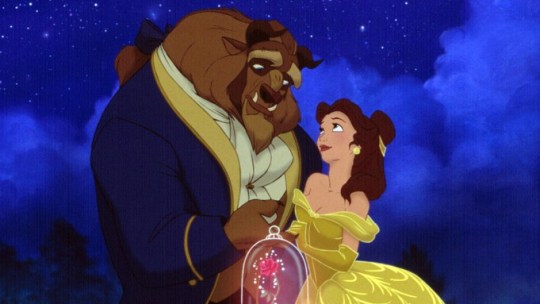
When I was growing up, my mother told me that fairytales were inspired by true, real-life stories. My imagination went wild, I was ecstatic that my beloved Cinderella, Ariel, and best of all Belle truly existed. That the magical world of Disney was our reality, that everyone received their happy ever after. When I was a little older, I understood her meaning. The magic Disney incorporated into our favorite animated movies wasn’t real, but in the past there probably was a poor servant girl who fell in love with a “prince.” There are various retellings of Aladdin. If you research other cultures, there are numerous folktales of “animal brides and grooms.” Ordinary girls who fall for cursed creatures and break their spells. Sometimes in the stories, the cursed creatures themselves, the “beasts,” fall for the “beauty” and become a better person. They were tales as old as time.


Several years ago, I was watching an episode of “Mysteries at the Museum,” featuring a segment with a portrait of a man and woman from the Renaissance period. The striking couple was dressed eloquently as nobles, but the man’s appearance had a unique characteristic: his face and body were covered in long hair. The host introduced the man as Petrus Gonsalvus, who was known throughout Europe as the “man of the woods.” On hearing Petrus and his wife Catherine, the lady featured in the portrait, perhaps inspired one of our most beautiful fairytales, my heart skipped a beat. Could it be? My Belle and Beast?!?!?! I was transfixed by the program, finding it bittersweet.
Born on the Canary Islands in 1537, Petrus suffered from what was then known as “Werewolf Syndrome.” It is now known as hypertrichosis. A genetic disorder, in the days of Renaissance, the child was viewed as a beast. When he was ten years old, Petrus was sold (possibly by his own parents) and brought to the French king, Henry II, and was gifted to the royal. Believed to be a talking monkey, for a time, he was kept in a cage and fed raw meat and animal feed…Until the king realized Petrus was intelligent. This could be an experiment, to turn a beast into a man! Petrus grew into a man, polished and articulate, educated, and he possessed a gentle soul. The court appreciated his talents, but continued to look upon him as a beast and a social attraction for their amusement.
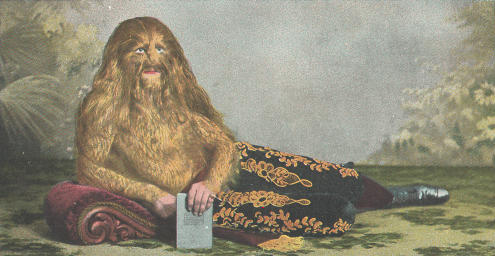
When King Henry II died, his wife Queen Catherine de Medici – a woman infamous for her cruelty and coldness – inherited Petrus and decided that it was time for Petrus to marry and to have children. The idea was to produce further “beasts” for the court. In keeping with tradition amongst nobility, a marriage was arranged. The bride-to-be was named Catherine Raffelin and little is known about her except her rare beauty, and that she didn’t meet Petrus until the wedding day. Rumor had it, on their wedding night, Catherine fainted from fear. Catherine eventually overcame her terror when she discovered Petrus was a gentle soul, and a friendship developed between the two.
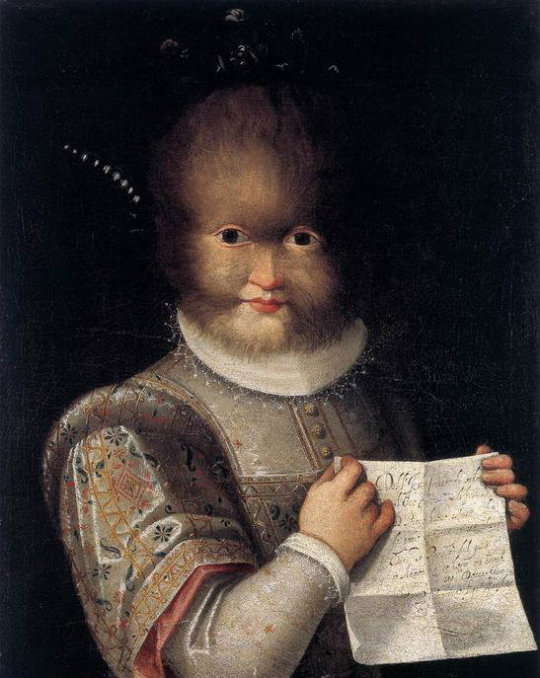
The couple was considered an oddity at court, but the queen was pleased when Petrus and Catherine had children, and four of their children had hypertrichosis. After the death of Queen Catherine de Medici, Petrus and Catherine and their children were shunned by the French court and traveled through Europe, presenting themselves as entertainment for various kingdoms. Petrus and Catherine’s children who were deemed “beasts” were taken from their parents and given to other royals as pets. Throughout the years, through all of the trials and tribulations, Petrus and Catherine remained together, side by side. They finally made their home in Italy, and the last mention of Petrus was in 1617, when he attended his grandchild’s christening. It is believed he died in 1618, and was denied a Christian burial since he was still not considered human. Catherine’s death is acknowledged to be in 1623. Their graves’ location is unknown.
Petrus and Catherine themselves are largely forgotten by contemporary audiences, but they left a lasting impression on the world. In the 18th century, two versions of the French fairytale, Beauty and the Beast, complete with magic, curses, and true love breaking spells, was published and they later became the inspiration for the famous animated Disney classic and other renditions.
The short segment about Petrus and Catherine on “Mysteries at the Museum” piqued my interest, and I had to know more. Did they love each other? Well, there is no way to know for certain what Petrus and Catherine felt for one another. However, the portrait that remains of the couple, shows Petrus and Catherine standing side by side, and Catherine’s hand is resting on Petrus’ shoulder. From my research, such a gesture shown in artwork was a sign of affection in those days, suggesting Catherine did care about Petrus. And she may have been the only one in the world who was able to see him for the man he was.

6 notes
·
View notes
Text
This is Lalit Patel. He's born with an extremely rare condition called Hypertrichosis, also known as werewolf syndrome (~50 people in history). Many of them worked as freaks and were promoted as having distinct human and animal traits. 🤔
#pay attention#educate yourself#educate yourselves#reeducate yourself#knowledge is power#reeducate yourselves#think for yourself#think for yourselves#think about it#do your homework#do your research#do your own research#question everything#ask yourself questions#ask yourself
9 notes
·
View notes
Text
Mum fears son's 'werewolf syndrome' was caused by her eating cat during pregnancy
New Post has been published on https://petn.ws/WkZau
Mum fears son's 'werewolf syndrome' was caused by her eating cat during pregnancy
A woman believes a bizarre craving she had during pregnancy has caused her son to have ‘werewolf syndrome’. Jaren Gamongan, from Apayao, the Philippines, has a ‘one-in-a-billion’ medical condition. The two-year-old has an incredibly rare syndrome called hypertrichosis. It’s said that only 50 to 100 cases of the condition have ever been reported. As a […]
See full article at https://petn.ws/WkZau #CatsNews
0 notes
Text
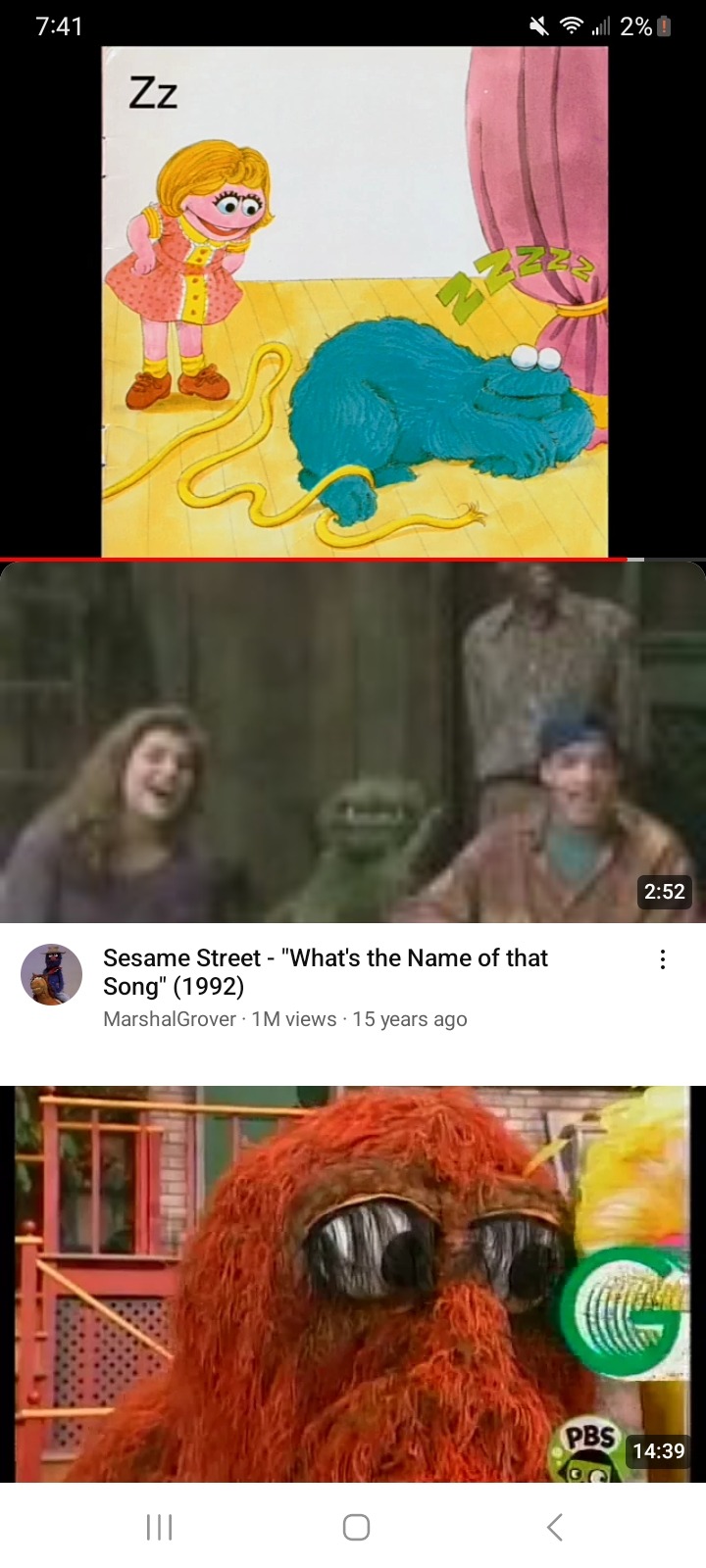
Primordial Dwarfism
Sacral Agenesis
Lesch-Nyhan Syndrome
Congenital Central Hypoventilation
Xeroderma Pigmentosum
Ichthyosis
Bosma Arhinia Microphthalmia Syndrome
Holt Oram
Osteogenesis Imperfecta
Fibular Hemimelia
Cerebral Palsy
ADHD
Autism
PTSD
Tourette Syndrome
Ehlers Danlos Syndrome
Pulmonary Hypertension
Spinal Muscular Atrophy With Respiratory Distress
Gastroparesis
Body Integrity Identity Disorder
Epidermolysis Bullosa
Thanatophoric Dysplasia
Metatropic Dysplasia
Prune Belly Syndrome
Maffucci SyndromeHennekam Syndrome
Prader-Willi Syndrome
Congenital Limb Deficiency
Muscular Dystrophy
Hallermann-Streiff Syndrome
Mast Cell Activation Syndrome
Fibrodysplasia Ossificans Progressiva
Trimethylaminuria/Fish Oudor Syndrome
Idiopathic Premature Autonomic Neuropathy
Progeria
Escobar SyndromeIdiopathic
Multicentric Osteolysis Pentalogy Of Cantrell NarcolepsyIsla
Kilpatrick-Screaton
Lymphatic Malformation
Albinism
Harlequin Ichthyosis
Bilateral Anophthalmia
Neurocutaneous Melanosis
Proximal Femoral Focal Disorder
Saddan Dysplasia
Pierre-Robin Syndrome
Down Syndrome Proximal Femoral Focal Deficiency
Lissencephaly Hypertrichosis/Werewolf Syndrome
Motor Neuron Disease
Erythromelalgia
Sturge Weber Syndrome
Arthrogryposis
Obsessive Compulsive Disorder
Mandibulofacial DysplasiaIncontinentia Pigmenti
Microcephalic Osteodysplastic Primordial Dwarfism
Centronuclear Myopathy
Persistent Genital Arousal Disorder Narcolepsy
Dwarfism Cystic Hygroma
Neurofibromatosis
Klippel Trenaunay Syndrome
Congenital Heart Defect
Arteriovenous Malformation Sotos Syndrome
Entity Syndrome Vitiligo Cloves Syndrome
Arteriovenous Malformation Moebius Syndrome
Goldenhar Syndrome
AlopeciaIdiopathic Pulmonary Arterial
Hypertension
Dermatillomania
Hypertrichosis
Cystic Hygroma
Filariasis Barber-Say Syndrome
Tar Syndrome Fibrodysplasia Psoriasis
Mayer-Rokitansky-Küster-Hauser Syndrome
Functional Neurological Disorder
Lymphedema Neurocutaneous
Lioedema/LipedemaArthrogryposis Multiplex CongeniaMarfan Syndrome
PiebaldismMorquio Syndrome
Congenital Tetrahocomelia Lymphangioma Epidermodysplasia
Harlequin Ichthyosis
Atypical Progeria Syndrome
Dyslexia
Hearing Impaired/Deaf
1 note
·
View note
Text

2023


Primordial Dwarfism
Sacral Agenesis
Lesch-Nyhan Syndrome
Congenital Central Hypoventilation
Xeroderma Pigmentosum
Ichthyosis
Bosma Arhinia Microphthalmia Syndrome
Holt Oram
Osteogenesis Imperfecta
Fibular Hemimelia
Cerebral Palsy
ADHD
Autism
PTSD
Tourette Syndrome
Ehlers Danlos Syndrome
Pulmonary Hypertension
Spinal Muscular Atrophy With Respiratory Distress
Gastroparesis
Body Integrity Identity Disorder
Epidermolysis Bullosa
Thanatophoric Dysplasia
Metatropic Dysplasia
Prune Belly Syndrome
Maffucci Syndrome
Hennekam Syndrome
Prader-Willi Syndrome
Congenital Limb Deficiency
Muscular Dystrophy
Hallermann-Streiff Syndrome
Mast Cell Activation Syndrome
Fibrodysplasia Ossificans Progressiva
Trimethylaminuria/Fish Oudor Syndrome
Idiopathic Premature Autonomic Neuropathy
Progeria
Escobar Syndrome
Idiopathic Multicentric Osteolysis
Pentalogy Of Cantrell
Narcolepsy
Isla Kilpatrick-Screaton
Lymphatic Malformation
Albinism
Harlequin Ichthyosis
Bilateral Anophthalmia
Neurocutaneous Melanosis
Proximal Femoral Focal Disorder
Saddan Dysplasia
Pierre-Robin Syndrome
Down Syndrome
Proximal Femoral Focal Deficiency
Lissencephaly
Hypertrichosis/Werewolf Syndrome
Motor Neuron Disease
Erythromelalgia
Sturge Weber Syndrome
Arthrogryposis
Obsessive Compulsive Disorder
Mandibulofacial Dysplasia
Incontinentia Pigmenti
Microcephalic Osteodysplastic Primordial Dwarfism
Centronuclear Myopathy
Persistent Genital Arousal Disorder
Narcolepsy
Dwarfism
Cystic Hygroma
Neurofibromatosis
Klippel Trenaunay Syndrome
Congenital Heart Defect
Arteriovenous Malformation
Sotos Syndrome
Entity Syndrome
Vitiligo
Cloves Syndrome
Arteriovenous Malformation
Moebius Syndrome
Goldenhar Syndrome
Alopecia
Idiopathic Pulmonary Arterial Hypertension
Dermatillomania
Hypertrichosis
Cystic Hygroma
Filariasis
Barber-Say Syndrome
Tar Syndrome
Fibrodysplasia
Psoriasis
Mayer-Rokitansky-Küster-Hauser Syndrome
Functional Neurological Disorder
Lymphedema
Neurocutaneous
Lioedema/Lipedema
Arthrogryposis Multiplex Congenia
Marfan Syndrome
Piebaldism
Morquio Syndrome
0 notes
Text
Persian Cat Meows the Word 'Mom' in Adorable Video#Persian #Cat #Meows #Word #Mom #Adorable #Video
A Persian cat has been filmed repeatedly meowing what appears to be the word “mom” in footage that has been melting the hearts of feline fans online. Atchoum lives in Quebec, Canada, with his owner Nathalie. A Persian cat by breed, the furry feline’s distinctive features are the result of a medical condition called hypertrichosis, or werewolf syndrome, which results in excessive hair…

View On WordPress
0 notes
Text
“ Indeed I do, actually! Did you know that there's a syndrome where you practically turn into werewolf?? Okay, well not really. "Werewolf syndrome" Also known as Hypertrichosis or Ambras syndrome, is a genetic condition that causes excessive hair growth all over the body. You still stay the same height and all that, you're just extremely hairy. How cool is that?? ”
“ Did you guys know that there's a condition that causes a person to become intoxicated from alcohol due to an overgrowth of fungus in the small intestines. The gut produces alcohol from food and drinks that contain carbohydrates, yeast, or bacteria. Symptoms include aches and pains, bloating, changes in bowel movements, fatigue, nasal discharge, and sinusitis? ”
“ No drinking needed, the fungus already did it for you. ”
#🧪 ; lawrence's ordeals.#🚬 ; LAWRENCE TALKS TO ADAM.#ooc: btw biting Larry’s arm off GRGRGRHAGHRGRRRAHHH#← AHHHHUUUGHHH!! PHOTOGRAPHER STANHEIGHT IN MY FREAKING INBOX WHAT THE VJAY VJAY#saw posting#saw#saw roleplay#adam faulkner stanheight#sawposting#saw rp#lawrence gordon
25 notes
·
View notes
Photo

“The rarity of real ‘hair people’.” Zeitschrift für Ethnologie. 1907. Stephan Bibrowski, known as The Lion-Faced Man.
#hypertrichosis#werewolf syndrome#stephan bibrowski#hair face#circus performer#medical rarity#nemfrog#1907#early 1900s
151 notes
·
View notes
Text
The Forest: Old Tales

The Forest: Beginning Masterlist
****
(Y/n) could hear the professor’s muffled voice as she brisked-walked towards her lecture hall, she was late. For the second time in the week, and if she would keep up the record, Mr Murray would not be kind to her.
“There have been a number of records of the legend and—”
The door opened with a dramatic squeak, making the professor pause and look down at her. (Y/N) cursed herself for being too swift.
“Um, good morning, Professor.” she sputtered out before making her way toward one of the empty seats.
The room was awfully quiet and each step seemed to echo, turning her more self-conscious with every step she took.
Thankfully, Mr Murray made no comment, in fact, he declared the text and page for her. She hastily took out the book and opened the page.
Lycanthropes
Mr Murray cleared his throat and resumed “So, there have been a number of records found, mentioning these beings. See, there are more definite timelines about Dracula, or vampires- blood-sucking, dead creatures. Lycanthropes, however, have a kind of more muddled up records of their origin and legends. However, the earliest, ancient legend goes back to Greek mythology.”
He took a pause and switched on the digital screen and switched off the lights. The screen showed a lycanthrope howling on a full moon night. The image was grotesque, sharp teeth resembling a typical wolf protruding out, but they were bigger, the creature was baring its teeth as it stood on two feet, body covered in fur but having the outline of that of a man. A giant form looming over.
“They are also known as werewolves. And while most of the modern times fiction describes them to be fully able to turn into wolves, the ancient legends describe them as part man, part wolf-like giants that fed on livestock and even humans.”
Professor Murray clicked on another picture, showcasing a painting of the Greek god Zeus.
“According to the legend, Lycaon, the son of Pelasgus, angered the god Zeus when he served him a meal made from the remains of a sacrificed boy. As punishment, the enraged Zeus turned Lycaon and his sons into wolves.”
The slide changed to another one. It showed two werewolf figures, half-turned, but one bigger than another.
“You see these two, the bigger one is a Lycan. Now, Lycans have been often mistaken as just werewolves. They are not. You see, in the Nordic folklore, there has been this confusion over the ancient werewolf legends as well. As mentioned before, Lycaon and his sons were considered the original ‘werewolves’. I believe they were not, You see, Lycans can be descendants of Lycaon and his offsprings.”
(Y/N) sat there, tensed as a stretched bow and gulped.
---++---
��Michael…” she whispered out, reaching for her friend’s hand. It was cold and shivering slightly, but his grip tightened. It did not feel right, they did not feel alone anymore.
“Michael…I don’t like it here anymore,” she whispered out to the frozen boy. She did not feel like it was only two of them anymore.
---++---
(Y/N) let out a sigh. Shaking her head slightly, she focused on the lecture.
“Now let us come to the facts.”
he changed the slide once more, this time, it had pictures of humans with excessive body hair.
“The Werewolf Syndrome or Hypertrichosis is a rare condition in human beings when they grow excessive body hair. Scientists point out that this rare condition might have been the prime source of the werewolf legend. You see, in the Dark Ages, people relied more on superstition and religion than science and rationality. So it is completely possible that the folktales have been inspired by such unfortunate individuals with the rare disease.”
He paused before continuing-
“ There is also a rare psychological condition called Clinical Lycanthropy when one believes that he or she is a wolf or any non-human entity. This might have caused people to act like wolves and then we have the legend of Lycans and Werewolves.”
Mr Murray finally switched off the slide and switched on the lights. (Y/N) blinked at the sudden exposure but did not take her eyes off the professor.
“I will be meeting you next week. Until then, you can dig up more about Lycans and Werewolves, we can have a smoother discussion on our next class, okay?”
A number of “Yes, Professor” emerged among the students.
“Any questions regarding this?”
“Sir, I have one. There have been pieces of evidence in modern times as well, like giant wolves, carcasses of wolf-like creatures and all. You think they are genuine?”
Professor Murray smiled while picking up his books and notes
“As a folklorist, my job is only to record the oral and ancient traditions and superstitions in order to help understand the civilizations that do not exist today, what are facts, what is science is in front of you, as any physical object. What is the origin of such bizarre folktales and legends, is what you believe. I know a few colleagues of mine who truly believe in fairies and elves. Assistant professor Maryline Evans is would be taking your classes regarding magical folklores this semester. You can ask her too.”
(Y/N) could not help the smile at his words, that was the thing about Professor Murray, he would always let the students have their own space to grow- he would provide information and guidance, the rest was on the students.
“Other than that, you can always visit the Legend and Myths sections in Library Attic. Not many students visit the place. But that will help your curiosity. See you in the next class, have a good week.”
And with that, he walked out of the lecture hall.
—-----
The Section for Folkloristics was at the end of the library. And the University library was vast- truly vast. It was comparatively secluded and quieter. There were students sitting there though, some were her classmates, and others were seniors.
“Hi, (Y/N).” it was George, the ginger-haired boy, lean and tall, with rimmed spectacles and clean-shaven, always. His curls fell over his forehead- they were short, but under the sun, they looked good.
“Oh, Hi George, you are here for books on the Werewolf legend?”
“Yeh, it’s in the attic though, with all the supernatural stuff.” he replied with a nervous smile.
“Yeah, '' Mr Murray said. You found something?”
“No, I was um, looking for someone to accompany me there. The occult section is right there.”
Now it made sense. Poor George was squeamish. And for a moment, for a brief, bleak moment, he reminded her of Michael.
“Yes, um, it feels weird to go there alone. No one’s upstairs?”
George shrugged “Could not hear a creak, so…Let’s just go, we are only prolonging this.”
—-----
The attic was a secluded place, while the abundance of sunlight did filter through the massive windows, there was a certain heaviness that sat upon it, maybe it was due to the old lady sitting by the door that opened to the occult section- only students of Occult Studies were allowed there and all professors of course, but students like her and George could visit if accompanied by any Professor of another Student of the daunting but alluring course.
“Why does it look like a witch’s cottage?” George whispered to her
“Maybe because the attic hosts such stuff? They say that the Occult Section is blessed twice a day, I wonder what it holds.”
“We would need a professor to get in there. But honestly, I would let it pass.” George glanced at the door to the occult section.
The lady sitting by the door eyed them curiously before shifting her attention back to the book she was reading.
“Yeah, maybe you’re right. We should not meddle with things we do not know.” she added, looking around as they walked into the section holding books on superstitions, myths and legends.
Why would the section be placed with the Occult Section? There was enough space downstairs.
“Oh there it is, look, Nordic Folklore, Greek mythology of Zeus and Lycaon.” George was quick to find the desired section.
The books were wide and heavy and her shift at the bistro would not begin until five in the evening. She could use the spare hours to research.
“The wolf has a complex symbolisation in the Nordic world, see here, Fenrir, or werewolves are considered evil- Volsunga Saga has tales regarding the myth. Some pelts that could turn a man into a wolf for eleven days.” George pointed out from his notes.
“Mhm, but they also considered wolves to be symbols of protection and strength.” (Y/N) pointed out
“Yes, but it’s complex I guess. Hey, look here, isn’t he the famous folklorist who gave theories and pieces of evidence on werewolves and lycans?” George rose from his chair and walked up to get one of the books on the bottom shelf.
“Dr. Caden Backe? You know that many consider his theories false, right?” she was sceptical, but George shrugged.
“And there are many who follow his theories, including Professor Murray.” he pointed out.
“Professor Murray believes in his theories? I thought he was a skeptic.”
“He might be, being a folklorist, his duty is to study the folklores and folks, try to conserve the endangered communities and practices, trace back the folktales of the past, and extinct communities for the sake of anthropology, not believing in them.”
George was right, besides, there was no denying that no one had studied the legend of werewolves as deeply as Dr Backe.
“You know he was one of the first folklorists to declare that Lycans and werewolves are different?” George clearly knew much more than she did, and it reminded her that she needed to work harder on the course.
“No, I mean, we never needed to study the legend of werewolves before so…I never bothered.”
“It’s alright, I have always been a little curious, that’s it.”
“A little curious? George, you better help me with the course, I don’t know what will become of me otherwise.” she sighed out as she flicked the pages of the book
“Hey, chill out, nothing’s too much here. We can have regular study sessions here, you help me with the language and stuff. This semester we might need to present interviews- fieldwork, you know?”
Her shoulders slumped at that, “Don’t tell me!”
George only shrugged “It’s a part of the course (Y/N). Now C’mon, let’s get to work.”
“So, according to him Lycans are the descendants of Lycaon and his sons- they’re pure-blooded. Stronger, smarter, more in tune with their human side and can control when they shift.” (Y/N) read through the analysis while George took notes.
“Noted. Anything else?”
“Enhanced speed, sense of smell, sight. More in tune with the moon- what is it supposed to mean?”
George looked up and read through the notes. “Maybe, closer to the moon and more in control of their reflexes and emotions? Werewolves shift on a full moon night- they must, they don’t have any control in that…Lycans can control when to shift. Maybe Dr Backe meant that since they have better control of their reflexes, their animal-side, they share a deeper connection with the moon?”
“I’m still confused.” she was not convinced.
“Me too.” he admitted. “I guess we need to do a thorough study regarding this. Or maybe speak to Professor Murray?”
“You’re right. There is this book he has recommended. Regions are said to have supernatural mysteries and folklores attached to them. What if we get a hint there?”
“You’re right. Wait, let me get that.”
While George busied himself in pursuit of the book, (Y/N) continued to read through the passage.
Dr Backe had made some claims that the myth of Lycans was prevalent among the remote areas of the place she was in. The towns and villages attached to some ancient woodlands had folklore regarding the origin and life of the early Lycans.
There were some interviews and tales he had gathered from the locals as well. And according to one of them, Lycans were superior to werewolves and while werewolves’ mates were decided according to the natural smell they found the most attractive, and hence more compatible. With Lycans, it was a bit different. It was more of a…
“Soul connection?” she read out aloud.
She could not help it. It appeared all too bizarre for her. “Is he serious?” she thought out loud.
“Apparently, he believes in those findings.” George was back with the book, and with the thin layer of dust covering it, it had not been touched for long.
“Found it. Finally!” he sighed out.
The book had a fading green cover and the title- ‘Of All Enchanted Woods’ was printed in gold.
“Seems more like a fairy tale.”
“A grim fairy tale,” he commented before opening it carefully. The edition was that of two decades old and the yellowed pages gave away its waning life.
But there was something about old books that appealed to (Y/N). The green cover was fading; it had once been deep, rich, shining green, like a dense, flourishing forest.
“Mostly they are forests so the title now makes sense. Have a look, see if you can find something. I’ll skim through Dr Backe’s book and make notes for both of us until then.” George offered.
(Y/N) nodded and took the book from him. There were some known regions to have rumours surrounding them and various tales associated with them. Popular regions were often crowded with Vloggers and other Paranormal/Supernatural Show Hosts.
Most of the forests had tales of elves and fairies, some even had paranormal associations. But one name in the index caught her eyes.
It was the woodland surrounding her grandparents’ little town.
****
I apologise if the depiction of the course of Folklorists is inappropriate, I admit I have almost no knowledge about the course, the choice of subject has been only for the convenience of the story plot.
Kindly treat everything here as pure fiction.
#yandere bts#bts yandere#yandere namjoon#yandere rm#yandere creature#yandere bts x reader#yandere namjoon x reader#yandere bts smut#yandere namjoon smut#the forest'#the forest trilogy#namjoon x reader
112 notes
·
View notes
Note
Skywatcher (from Firestar's Quest, in case anyone forgot) has werewolf syndrome
"Werewolf syndrome", or hypertrichosis, is a hormonal dysfunction that leads to the person - in this case, cat - developing a lot more fur than usual. Here is a picture:

26 notes
·
View notes
Text
So I brought this up in the Moon Knight Discord, but I figured other MK fans might be interested!
In the Lemire run, Space Commander Marc is fighting against Lupinar, leader of the werewolf armies.

And back when we were reading this in 2018, I figured this was a new character who was cool reference to Werewolf by Night!
However, this turns out not to be the case! It turns out that Lupinar has actually appeared before!
Before the Moon Knight system got their own series, they appeared in a series of bonus stories that took part of the 1978 Hulk magazines. One of the villains that Marc faces as Moon Knight (in Hulk #13-14) is none other than Lupinar!

Lupinar has hypertrichosis (sometimes called “werewolf syndrome”), which causes him to grow massive amounts of body hair. His condition made him feel like an outcast, so he’s using his villainy to take it out on everyone else--particularly through funding the terrorist organization Marc is trying to dismantle.
(The super obvious codpiece is a necessary part of this somehow.)
Once Moon Knight starts interfering with his terrorist cell, he becomes obsessed with fighting the superhero, since he’s heard that Moon Knight has fought an actual-factual werewolf (aka Jack Russel the Werewolf by Night). They had a swordfight, and Lupinar commits suicide to avoid getting captured.
As far as we know, Lupinar doesn’t appear again until the Lemire run, but then again we haven’t read everything yet.
Just a cool little Moon Knight lore tidbit!
8 notes
·
View notes